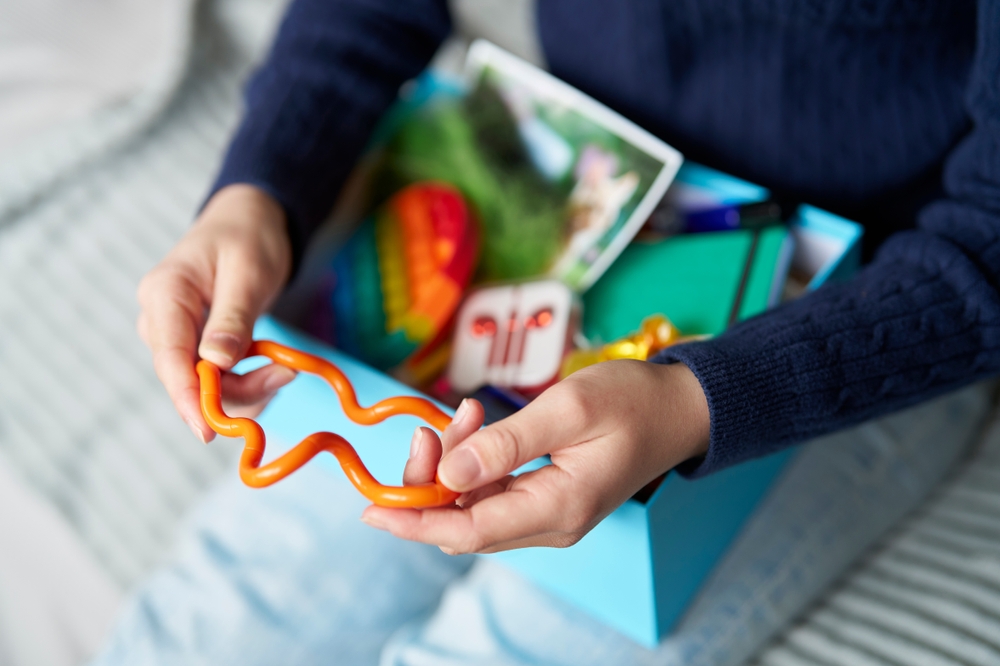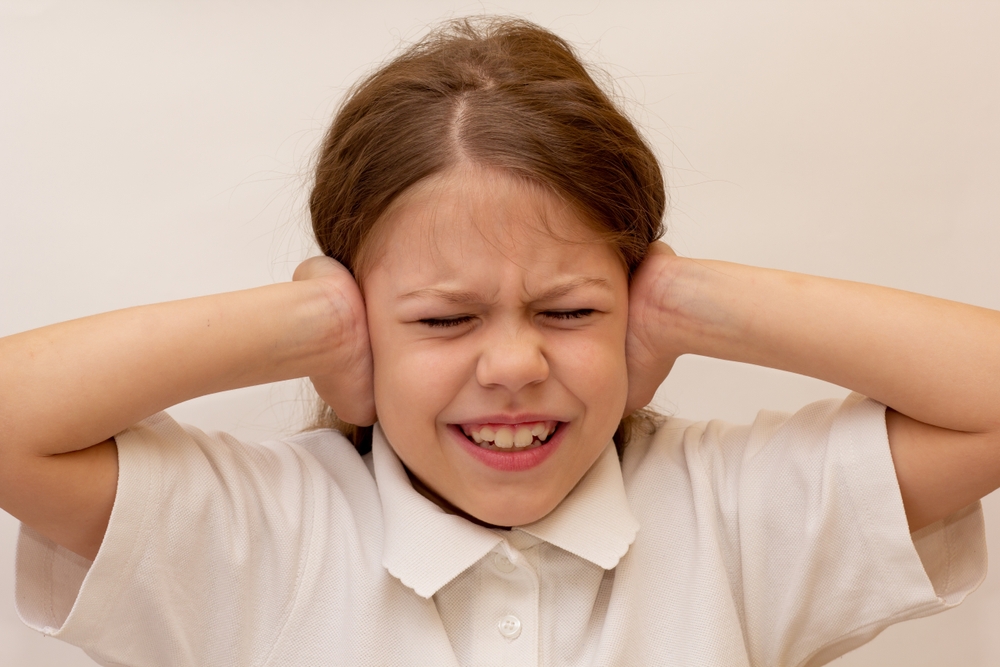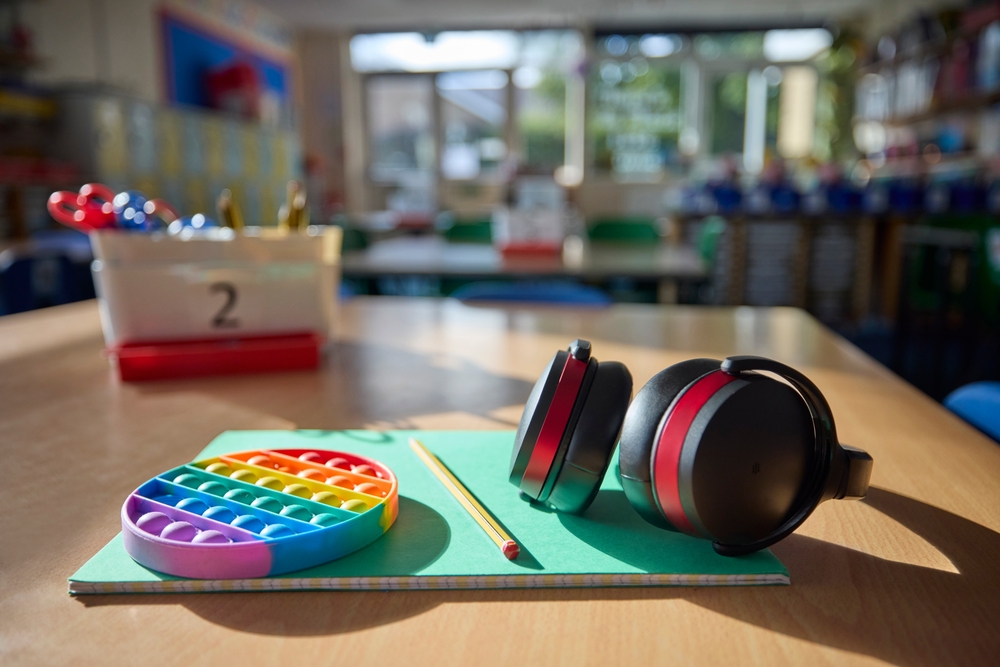Read this blog to learn about the causes of sensory overload in autism, important signs to look out for, and what you can do to manage overload.
The causes of sensory overload in autism can be due to strong smells, loud noises, unpleasant textures, or anything else that makes the brain receive too much information and cause overwhelm, anger, and anxiety.
Unfortunately, while sensory overload is relatively common in autism, it is not easy to avoid or handle due to the world we live in and how different everyone’s experiences can be. However, it is important to understand underlying causes so that we can do our best to help ourselves or our loved ones.
If you want to find out more about ASD, why not have a look at our blogs on how to parent a child with ADHD and autism, or learn about 10 iconic autistic fictional characters?
What is Sensory Overload in Autism?

Sensory overload in autism occurs when the brain struggles to process overwhelming sensory input, such as loud noises, bright lights, or crowded spaces, leading to distress and anxiety.
When the brain is not able to properly process sounds, smells, textures, and other stimuli from the senses, an intense feeling of anxiety and overwhelm can build up – called sensory overload. In more severe cases of sensory overload, a person might experience a meltdown, where they may have involuntary reactions as a response to the stimuli, such as kicking, crying, or rocking, among others.
If you are experiencing sensory overload, you are likely going to be more sensitive to stimuli, and this can cause more intense reactions. Lights may be brighter, sounds may be louder or more high-pitched, and everything you feel might feel like an overreaction (but please remember that it isn’t).
As a result, anxiety levels will increase, and you will become more and more agitated. This can lead to concentration problems, irritability, and physical discomfort, which may manifest differently in autistic boys and girls.
How Does the Autistic Brain Process Sensory Input?
Autistic brains can experience hypersensitivity (heightened sensitivity) and hyposensitivity (reduced sensitivity), and often both at the same time for different stimuli, which can make the person engage in sensory-seeking behaviours that will regulate their sensory input, such as rocking, spinning, seeking deep pressure, and more.
What Are the Common Triggers of Sensory Overload?
Common triggers for sensory overload include changes to a routine, bright lights, strong smells and tastes, crowded spaces, loud sounds, and more. Many people with autism might be sensitive to various textures, and fatigue can make sensory overload more likely to happen
The causes of sensory overload in autism can be different from one person to another
Top 5 triggers of sensory overload in autism:
- Changes to a set routine
- Loud and/or abrupt sounds
- Bright lights (particularly fluorescent or LEDs)
- Strong or unpleasant scents (e.g. perfume)
- Crowded spaces
What Are the Signs and Symptoms of Sensory Overload?

Key signs of sensory overload include irritability, extreme fatigue, physical discomfort, feeling restless, and a strong need to self-stimulate. If you are trying to identify sensory overload in someone else, you might notice someone stimming, covering their eyes or ears, not talking, talking faster, or talking louder, and much more.
Sensory overload can look different in everyone, but there are likely to be some widespread behaviours that you will notice in most, if not all, people who are experiencing it. It’s important to remember that many behaviours might be subtle if you are not tuned in to looking for them, particularly in many girls and women, as they tend to be better at masking or “hiding” their behaviours to appear more neurotypical.
Some common behaviours you might see if someone is experiencing sensory overload include:
- Covering ears or eyes
- More stimming behaviours
- They want to escape a situation
- Not talking, talking faster, or talking louder
- Trouble recognising sensations in the body
- Moving around more (spinning, jumping, etc)
- Often chewing on non-edible or non-food items
- Frequently playing rough or touching other people
- Meltdown (overwhelming and escalating emotions)
- Refusing to or insisting on specific things (wearing particular clothing/eating certain foods)
- Shutdown (the brain shifts all resources to handle the sensory input and can make it difficult to respond or communicate)
Which Coping Strategies and Management Techniques are Best for Sensory Overload?
Coping strategies for sensory overload include stimming, using fidget toys and weighted blankets, and removing yourself from the situation so that you can regulate yourself better.
Specific coping strategies and management techniques will vary from person to person, so if you know someone who has ASD, try to ask them about their strategies so that you can help them.
To help with sensory overload, you can:
- Create sensory-friendly environments wherever possible, especially at home
- Using products that provide deep pressure, such as weighted blankets
- Use headphones, sunglasses, and other protective measures, to help manage stimuli
- Try to get a good night’s sleep
- Using visual supports if you have difficulty with processing audio information
- Exercise every day to improve your mental and physical health
- Have a plan to follow if you experience sensory overload
- Utilise sensory tools like fidget toys
What is Hypersensitivity and Hyposensitivity, and What Role Does it Play in Sensory Overload?

Hypersensitivities and hyposensitivities can make a person more or less sensitive or reacting to specific stimuli, but this can vary from person to person. For example, someone with a light hypersensitivity will experience sensory overload more quickly due to bright lights, and dim lights can help with regulating.
Some things that might help someone with hypersensitivities include:
- Do your work where there are closed doors and high walls
- Adjust your schedule to try and avoid large and noisy crowds
- Wear earplugs or headphones when in a noisy space
And for hyposensitivities, you might:
- Take breaks often to go around and move
- Utilise sensory tools
- Using products that provide deep pressure
What Can You Do to Create a Sensory-Friendly Environment for Someone with Autism?
To create a sensory-friendly environment, you can reduce unpleasant and strong smells, be mindful of any texture-related sensitivities, and use dim lighting while avoiding LED lights.
There are lots of measures that can be put into place to help create a suitable and sensory-friendly environment, so let’s look at some examples below.
Can You Reduce Unpleasant or Strong Smells?
Smells like certain deodorants, diffusers, sprays, and essential oils can be overpowering to many people, as can the smell of certain strong foods and less pleasant odours. If you can, take measures to focus on getting scents that do not overpower you, or try to get unscented things as much as possible. This could be fabric softener, deodorants, and so on.
How to Be Mindful of Texture Sensitivities for Autism
Textures can relate to foods and tactile textures like fabrics, and it’s important to come up with a list of all the textures that you or the autistic person does not like. Common examples of this can include microfiber clothes, velvet, slimy food, stringy food, and so on.
Catering to these preferences can mean changing pillow cases, blankets, and duvets to be more suitable, and making sure that the clothes you buy do not make you uncomfortable in any way. For food, it’s crucial to have “safe foods” that you can go to, with common examples being cheesy pasta or chicken nuggets.
Please note that, while it’s always good to try new foods and encourage people to do so, never force someone to try something. A person with ASD is also less likely to want to try new foods, so patience and encouragement is key.
Making Lighting Changes is Easier Than You Think
Many autistic people are sensitive to LED or fluorescent lights, so removing sources of these wherever possible can be incredibly helpful in creating a sensory-friendly environment. Get the right lighting by changing bulbs and light or lamp shades where possible for dimming. While not always possible, getting light switches that can be dimmed is also a fantastic option, as this allows a good level of control over the lighting.
How The Brain Workshop Can Support Sensory Processing Challenges

At The Brain Workshop, we want to help you understand more about ADHD and ASD, and make sure that you get the knowledge and support you need. Here, we explore autism-related topics like sleep disorders, echolalia, and more – like if ASD is a learning disability and if ASD and Asperger’s are the same.
While the causes of sensory overload in autism can be complicated, we need to do our best to learn about it and take steps to help our loved ones. So, if you are looking for expert support on managing sensory overload in autism, contact The Brain Workshop today for tailored strategies and professional guidance.
If you would like to learn more, please don’t hesitate to learn more about us at the Brain Workshop, meet our team, check out events, or even read our FAQ.






